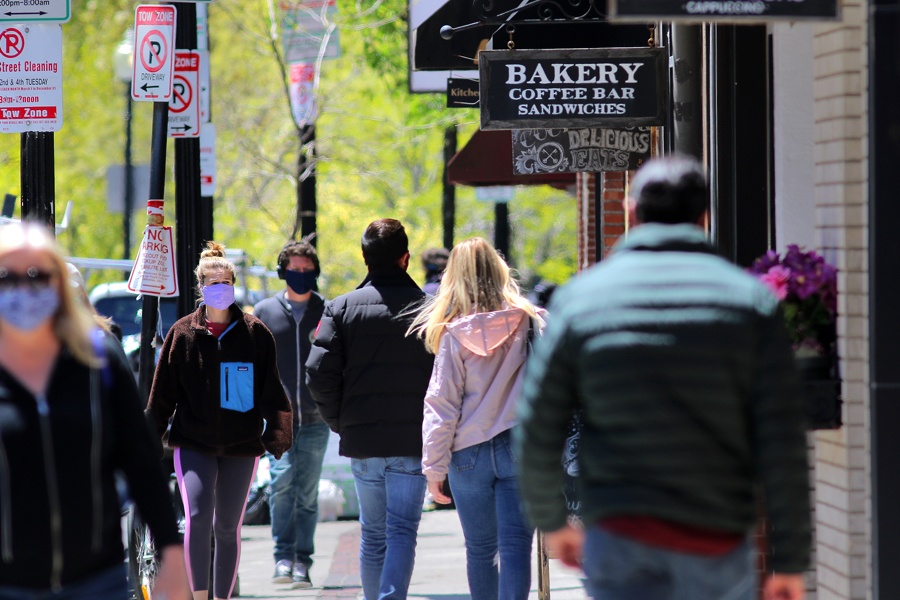More People Are Living in Boston These Days. A Lot More
The populations of Boston and Massachusetts both swelled in this latest round of Census data.

Hanover Street photo by Lane Turner/The Boston Globe via Getty Images
Feel like you’ve got a few more neighbors these days? You’d be right. According to the newly released batch of data from the 2020 Census, both Boston and Massachusetts have continued getting bigger.
The Commonwealth added 482,288 people, a 7.4 percent increase that brings the official count of the state’s total population to 7,029,917. The city added 58,000 people, for a new grand total of 674,647 people.
Boston’s growth is in keeping with broader trends the Census uncovered over these past 1o years, which has seen more people flocking to urban areas. The trend is not confined to Boston, of course. Cambridge grew by 13,241 people, Lowell grew by 9,035, and Quincy grew by 9,365.
Don’t sleep on Worcester, either. Increasingly, people looking for an urban environment less breathtakingly expensive than the Hub aren’t. The city, in the midst of a push to attract urban professionals and pursue giant development projects, added 25,473 people in the past decade. It has officially crossed the threshold of 200,000 residents for the first time since 1950.
It’s certainly not limited to New England. Over in New York, for example, NYC’s population increased by 629,000 people. That, as you may have noticed, is nearly the entire population of Boston.
Massachusetts’ draw as a destination is evidently remaining strong. With its ballooning population, the state is now the 15th largest by population in the nation. Not bad for a state that, by area, is only 44th largest.

Donahue Institute/UMass Amherst via State House News Service
Meanwhile, the population in two Western Mass. counties actually decreased in size over the last decade. Berkshire county shed 2,193 people, and Franklin lost 343.
The Census, of course, is not simply about federally collected factoids. The results of the survey will have major political impacts across the country. At the national level, Massachusetts will retain its House seats, so no worries there, although House districts will need to be redrawn somewhat. The concentration of population growth around Boston likely means that, geographically speaking, eastern districts will shrink, while western districts will grow.
This also means Boston may get some more representation in state government. Secretary of State William Galvin says the city could “potentially” add a seat at the state House of Representatives, according to the State House News Service.
The redistricting process also accounts for the changing ethnic demographics of the city and the state. While the state’s share of the population that is non-Hispanic white shrunk from 76 to 68 percent, the Hispanic and Latino populations grew from 10 percent to 13 percent.
In Boston, the percentage of Bostonians identifying as Black has shrunk, by 8,809 residents, in the last decade. Black Bostonians now make up 19.3 percent of the population, down two percentage points since 2010. With white residents making up 44.5 percent of the population, Boston remains a majority-minority city.


